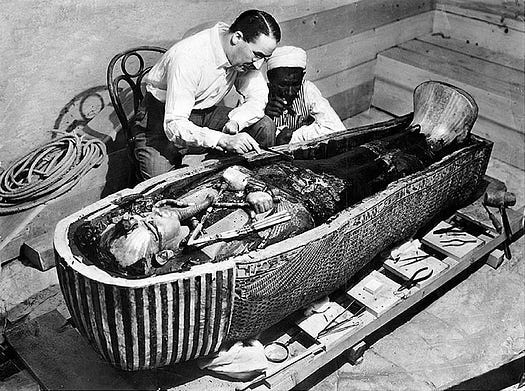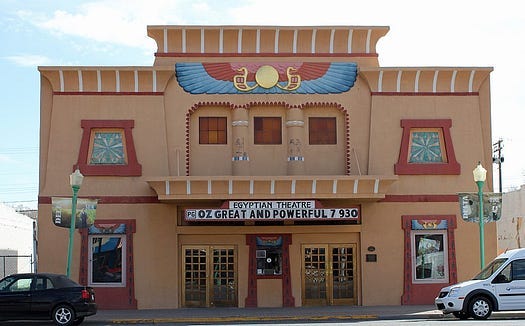
Late in 1922 the archaeologist Howard Carter broke through the wall of a tomb, and in the flickering candlelight saw ‘wonderous things,’ but 1923 was the year that made the young king the most renowned archaeological event of all time. In 1923, the local paper in Adelaide, South Australia, on the other side of the world, had no less than 32 reports about ‘Tut-ankh-amen’, nearly all on the front page. It was a news editor’s dream of endless sensational copy. It was the start of a public love affair with Egyptology that remains strong one hundred years later.
The newspaper bonanza was no accident. It was carefully managed to the point of manipulation by two London newspapers: the Times and The Illustrated London News (ILN). The rise of Tutankhamun would have been very different without them. The key was exclusivity, drip-feeding the story and creating the mystery of the ‘curse.’ Hand drawings and the innovative use of photography were also paramount. The results are apparent in the weekly excerpts of the Illustrated London News from 1923 to 1925,[1] including the sensational colour photographs of the king’s sarcophagus and death mask.
The Times was quickest off the mark, sealing an exclusive deal with George Herbert, Earl of Carnarvon, while he was on the passenger ship in the Mediterranean before the unpacking of the tomb began. Howard Carter had a longstanding association with the Illustrated London News, and the two papers shared the find, much to the chagrin of the local Egyptian press, which had to wait for news from London. This was a point of friction that caused diplomatic tension and probably prevented the permissions that Carter sought to keep some of the artifacts.
The headlines were sensational. ‘Wonders of the Inner Chamber,’ ‘Pharoah Fashions’, and my favourite, ‘Spooks and the Egyptologist’ where Sir Arthur Conan Doyle is reputed to be worried about the fate of Howard Carter. Lord Carnarvon’s death in April 1923 had inflamed the ‘spiritualists,’ for whom Conan Doyle was a leading proponent. The ‘malign influence’ of the Pharoah’s tomb was an early feature of the newspaper coverage ignited further in September 1923, when Carnarvon’s half-brother, Aubrey Herbert, also died. The ‘curse’ is a powerful legacy that quickly made its way into Hollywood. The first ‘mummy’ movie was made in the 1930s.
Unpacking the tomb was a painstaking process that took ten years. The Illustrated London News was able to continue the breathless coverage largely due to the wonderful photography of Harry Burton, a friend of Howard Carter, working in Egypt for the Metropolitan Museum. Given permission to assist, Burton spent the next ten years taking over 3000 photographs of the tomb and its contents. It would be his color photograph, exclusive to the ILN, that provides the iconic images of King Tutankhamun, including the death mask. I contend that it is the most recognisable photograph ever taken.
In 1923 ‘King Tut’ became the commonplace name of the most famous Pharoah of Egypt and anything Egyptian was fashionable. Lotus motifs appeared on architectural facades, movie theatres imitated Karnak temples, and faux Egyptian crockery filled dressers.

It was a phenomenon that left no room for any other archaeological find. In 1925 the photographs of prehistoric Lascaux were tepidly headlined ‘A Discovery as Wonderful as that of Tutankhamen’s Tomb.’
However, the Egyptomania came at a cost. Too much publicity soured the study of Tutankhamun’s treasures according to one panel of Egyptologists.[2] Tutankhamun became too kitsch a subject for serious study. As a result, a century after the discovery, less than half the treasures have been removed from storage for careful evaluation.
Nevertheless, if Tutankhamun was seeking immortality, he timed his appearance perfectly. Mass media has made him a cultural meme. That may not equate with eternity, but not many celebrities can hope for 100 years of fame and counting.
[1] The Great Archaeologists. The Modern World’s Discovery of Ancient Civilisations as Originally Reported in the Pages of The Illustrated London News, ed E Bacon, Book Club Associates 1976
[2] ‘Tutankhamun’ In Our Times BBC 26Dec 2019



